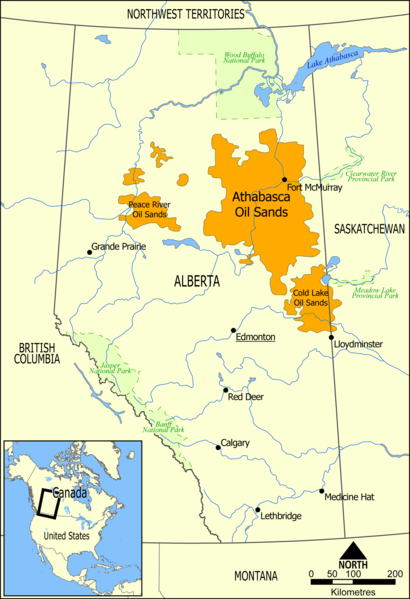March 2014, Vol. 241 No. 3
Features
Oil Sands Investment Will Support More Than 753,000 Jobs By 2025, Study Finds

Canadian oil sands production is generating significant economic benefits for Canada in terms of jobs, economic growth and government revenue, a new IHS CERA Oil Sands Dialogue study finds.
The economic contributions of oil sands—currently greater than that of Saskatchewan, Canada’s fifth-largest province—will grow substantially in coming years as oil sands production is expected to double by 2025.
The study, Oil Sands Economic Benefits: Today and in the Future, seeks to quantify the economic impact of oil sands. It finds that oil sands production supported more than 478,000 direct, indirect and induced Canadian jobs in 2012 (3% of all jobs in the country) and contributed C$91 billion of Canadian gross domestic product (GDP).
In 2012, government revenues in the form of tax receipts and royalties totaled a combined $C28 billion. The federal share was more than half (C$15 billion) of the revenue and represented 6% of total federal income, equal to half of federal spending on healthcare transfers in 2012, the study says. Revenues would have been even higher had western Canadian crude oils not been subject to price discounts due to export bottlenecks, the study adds.
“Oil sands production already represents a significant economic contribution to the Canadian economy, with annual expenditures already greater than the gross domestic product of half of the Canadian Provinces,” said Jackie Forrest, IHS senior director, who heads the Oil Sands Dialogue. “Those contributions, in terms of jobs, economic growth and government revenues will continue to grow along with oil sands development.”
IHS expects oil sands production to double from the current level of 1.9 million barrels per day (mbd) to 3.8 mbd by 2025.
Among the study’s key findings on the economic contributions of oil sands in 2025:
• Jobs from oil sands are expected to grow 58% from today, representing a total of 753,000 jobs, equivalent to 5% of total Canadian employment in 2012.
• The contribution of oil sands to Canadian GDP is expected to nearly double to C$171 billion in 2025, comparable to adding an economy the size of Saskatchewan today to Canada.
• A more than 100% increase in government revenues from the total effect of oil sands investment in Canada, from C$28 billion in 2012 to C$61 billion in 2025. The federal share of revenue (C$28 billion) would be roughly equivalent to what the federal government spent on healthcare transfers to provinces in 2012.
The profound economic contributions from oil sands are driven by the industry’s capital-intensive nature, which requires ongoing investment to sustain production. Four-fifths of every dollar made by oil sands operations did not leave the industry, but rather was reinvested into maintaining and moving oil sands production to market in 2012, said Kevin Birn, IHS associate director.
“The economic benefit of oil sands is considerably greater than the amount of money oil sands companies invest, or the number of people who work directly in the industry,” Birn said. “Each dollar invested in oil sands spurs additional spending across other sectors of the economy. Oil sands development depends on a multitude of other industries—such as construction, engineering, geology, finance, manufacturing, environmental analysis and hospitality.”
Oil Sands Economic Benefits: Today and in the Future is based on the combined efforts of IHS CERA, IHS Global Insight, and IHS Herold. IHS estimated oil sands future capital and operating expenditures using its proprietary? oil sands supply, capital cost, and operating cost models. The capital spending outlook considered the specific type of investment including labor, process equipment, steel, engineering and other inputs required to grow and maintain oil sands supply. Because comprehensive data on the geographic distribution of direct oil sands investment does not exist, the estimates assume all direct spending occurs in Alberta. Since some direct spending occurs beyond the province, this understates the economic impact to other regions of Canada and the United States. The economic effects of the oil sands investment was calculated using the latest version of Statistics Canada’s interprovincial input/output model, updated in 2013.
Oil Sands Economic Benefits: Today and in the Future and all other IHS CERA Oil Sands Dialogue Research is available at www.ihs.com/oilsandsdialogue.





Comments